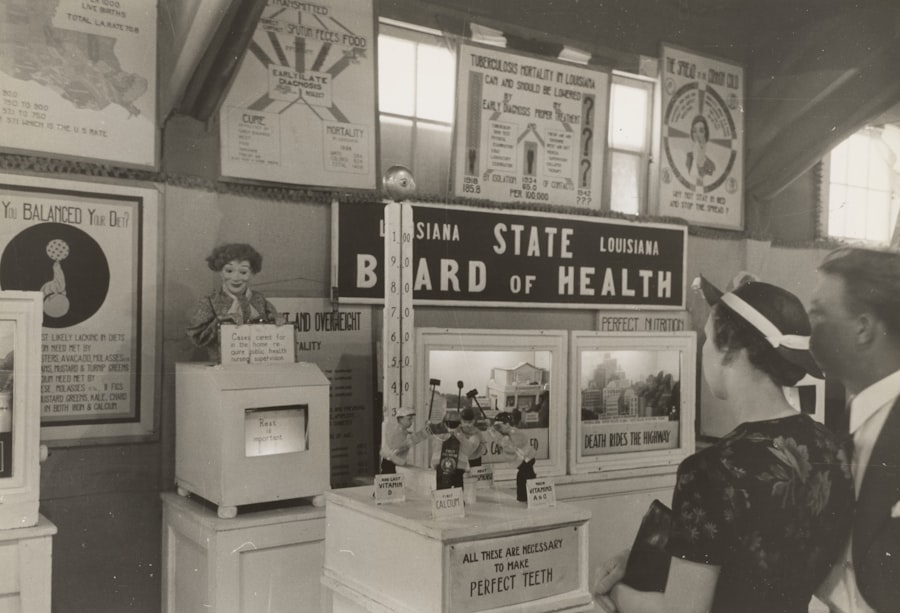In the rapidly evolving landscape of healthcare, Business-to-Business (B2B) partnerships have emerged as a pivotal strategy for organizations seeking to enhance their service delivery and operational efficiency. These partnerships encompass a wide range of collaborations between healthcare providers, technology firms, pharmaceutical companies, and other stakeholders within the healthcare ecosystem. The primary objective of these alliances is to leverage shared resources, expertise, and technologies to improve patient outcomes and streamline processes.
As healthcare systems face increasing pressures from rising costs, regulatory changes, and the demand for higher quality care, B2B partnerships offer a promising avenue for innovation and improvement. The significance of B2B partnerships in healthcare cannot be overstated. They facilitate the integration of diverse capabilities and knowledge bases, enabling organizations to tackle complex challenges more effectively.
For instance, a hospital may partner with a technology firm to implement an advanced electronic health record (EHR) system that enhances data management and patient tracking. Similarly, pharmaceutical companies often collaborate with research institutions to accelerate drug development processes. These partnerships not only foster innovation but also create a more interconnected healthcare environment where stakeholders can work collaboratively towards common goals.
Key Takeaways
- B2B partnerships in healthcare are crucial for integrating technology and improving patient outcomes.
- Technology plays a transformative role in enhancing healthcare services and operational efficiency.
- Collaborative partnerships enable better data sharing and interoperability, leading to more coordinated care.
- B2B collaborations help address healthcare challenges by fostering innovation and cost-effective solutions.
- The future of healthcare relies on continued B2B innovation to unlock new opportunities and improve industry impact.
The Role of Technology in Revolutionizing Healthcare
Technology plays a transformative role in the healthcare sector, driving significant advancements that enhance patient care and operational efficiency. The integration of digital tools such as telemedicine, artificial intelligence (AI), and big data analytics has revolutionized how healthcare providers deliver services. Telemedicine, for example, has expanded access to care by allowing patients to consult with healthcare professionals remotely, thereby reducing barriers related to distance and mobility.
This shift has been particularly beneficial in rural areas where access to specialized care is often limited. Moreover, AI and machine learning algorithms are increasingly being utilized to analyze vast amounts of healthcare data, leading to improved diagnostic accuracy and personalized treatment plans. For instance, AI-driven tools can analyze medical images with remarkable precision, assisting radiologists in identifying conditions such as tumors or fractures more quickly than traditional methods.
These technological advancements not only enhance the quality of care but also empower healthcare providers to make data-driven decisions that can lead to better patient outcomes.
Improving Patient Care through B2B Partnerships

B2B partnerships are instrumental in enhancing patient care by fostering collaboration among various stakeholders in the healthcare ecosystem. For example, a partnership between a hospital and a telehealth provider can significantly improve access to specialists for patients who may otherwise face long wait times or travel challenges. By integrating telehealth services into their offerings, hospitals can ensure that patients receive timely consultations and follow-up care, ultimately leading to better health outcomes.
Additionally, partnerships between pharmaceutical companies and healthcare providers can facilitate clinical trials that bring innovative treatments to market more rapidly. These collaborations enable healthcare providers to access cutting-edge therapies while contributing valuable real-world data that can inform future research and development efforts. By working together, these entities can create a more efficient pathway for bringing new medications and therapies to patients who need them most.
Enhancing Efficiency and Cost-Effectiveness in Healthcare
| Metric | Description | Current Value | Target Value | Impact on Efficiency | Impact on Cost-Effectiveness |
|---|---|---|---|---|---|
| Average Patient Wait Time | Time patients wait before receiving care | 45 minutes | 20 minutes | High | Medium |
| Readmission Rate | Percentage of patients readmitted within 30 days | 15% | 8% | Medium | High |
| Electronic Health Record (EHR) Utilization | Percentage of patient records digitized and accessible | 70% | 95% | High | High |
| Staff Productivity | Number of patients handled per staff per day | 12 | 18 | High | Medium |
| Cost per Patient Visit | Average operational cost per patient visit | 120 | 90 | Medium | High |
| Telehealth Adoption Rate | Percentage of consultations conducted via telehealth | 25% | 60% | High | High |
| Medication Error Rate | Percentage of medication errors per 1000 prescriptions | 5 | 1 | Medium | High |
The financial pressures facing healthcare organizations today necessitate a focus on efficiency and cost-effectiveness. B2B partnerships can play a crucial role in achieving these objectives by streamlining operations and reducing redundancies. For instance, a partnership between a hospital and a supply chain management firm can optimize inventory management processes, ensuring that medical supplies are available when needed without incurring excess costs associated with overstocking.
Furthermore, collaborative efforts between healthcare providers and technology companies can lead to the development of integrated systems that reduce administrative burdens. For example, automating billing processes through partnerships with financial technology firms can minimize errors and accelerate revenue cycles. By enhancing operational efficiency through such collaborations, healthcare organizations can allocate resources more effectively, ultimately improving their bottom line while maintaining high standards of patient care.
The Importance of Data Sharing and Interoperability in B2B Partnerships
Data sharing and interoperability are critical components of successful B2B partnerships in healthcare. The ability to exchange information seamlessly among different systems allows for a more holistic view of patient care and facilitates coordinated treatment efforts. For instance, when hospitals partner with laboratories or imaging centers, the ability to share patient data electronically ensures that all providers involved in a patient’s care have access to the same information, reducing the risk of errors and improving continuity of care.
Interoperability also enhances the potential for population health management initiatives. By aggregating data from various sources, healthcare organizations can identify trends and patterns that inform public health strategies. For example, partnerships between health systems and public health agencies can lead to more effective responses to outbreaks by enabling real-time data sharing on disease incidence and vaccination rates.
This collaborative approach not only improves individual patient care but also contributes to broader public health goals.
Addressing Healthcare Challenges through Collaborative B2B Partnerships

The healthcare industry faces numerous challenges, including rising costs, workforce shortages, and disparities in access to care. Collaborative B2B partnerships offer innovative solutions to these pressing issues by pooling resources and expertise from various stakeholders. For instance, partnerships between hospitals and community organizations can address social determinants of health by providing support services such as transportation or housing assistance for underserved populations.
Additionally, collaborations focused on workforce development can help mitigate staffing shortages in critical areas such as nursing or primary care. By partnering with educational institutions, healthcare organizations can create training programs that align with workforce needs while providing students with hands-on experience in clinical settings. This approach not only helps fill gaps in staffing but also fosters a pipeline of skilled professionals who are prepared to meet the demands of the evolving healthcare landscape.
The Future of Healthcare: Innovations and Opportunities in B2B Partnerships
As the healthcare industry continues to evolve, the potential for innovation through B2B partnerships is vast. Emerging technologies such as blockchain hold promise for enhancing data security and integrity in healthcare transactions. By enabling secure sharing of patient information across different platforms, blockchain technology can facilitate trust among stakeholders while ensuring compliance with regulatory requirements.
Moreover, the rise of personalized medicine presents new opportunities for collaboration between pharmaceutical companies and healthcare providers. As genetic testing becomes more prevalent, partnerships focused on developing targeted therapies based on individual patient profiles will likely become increasingly important. These collaborations can lead to breakthroughs in treatment options for conditions that have historically been difficult to manage.
The Potential Impact of B2B Partnerships on the Healthcare Industry
The impact of B2B partnerships on the healthcare industry is profound and multifaceted. By fostering collaboration among diverse stakeholders, these partnerships have the potential to drive innovation, improve patient care, enhance operational efficiency, and address systemic challenges within the sector. As technology continues to advance and the demand for high-quality care grows, the importance of strategic alliances will only increase.
In this dynamic environment, organizations that embrace B2B partnerships will be better positioned to navigate the complexities of modern healthcare delivery. By leveraging shared resources and expertise, they can create more effective solutions that ultimately benefit patients and communities alike. The future of healthcare will undoubtedly be shaped by these collaborative efforts, paving the way for a more integrated and responsive system that prioritizes patient needs above all else.



